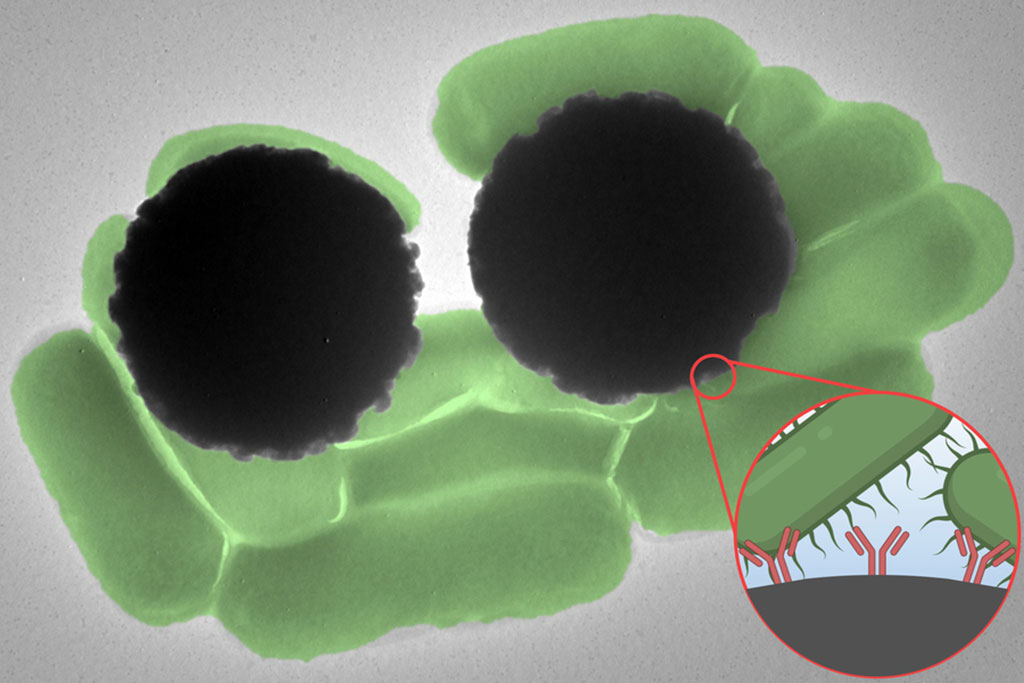Portable Device to Quickly Detect Bacterial Pathogens Using New Optical Signature
Posted on 28 Aug 2023
Receiving results from a blood test or other diagnostic assessments often involves a waiting period of one to seven days, depending on the specific test's target. This time lag can be primarily attributed to the laborious steps in sample processing and analysis. The quantities of diseased cells or pathogens in fluid samples are so minute that they require cultivation in controlled settings to increase their numbers. Subsequently, these cultures are stained and examined under a microscope. This comprehensive procedure extends over several days to yield a conclusive positive or negative outcome. Now, researchers have identified a new optical signature in a commonly used class of magnetic beads, known as Dynabeads. This discovery holds the potential to speed up the detection of contaminants in various diagnostic tests, such as identifying traces of the foodborne pathogen Salmonella.
Dynabeads, microscopic magnetic beads, are capable of being coated with antibodies that attach to specific target molecules, like pathogens. Typically, Dynabeads are integrated into solutions to capture desired molecules, but further time-consuming steps are essential to confirm their presence and attachment to the beads. A team of scientists at Massachusetts Institute of Technology (MIT, Cambridge, MA, USA) have leveraged optics, specifically Raman spectroscopy, to confirm the presence of Dynabead-bound pathogens. Raman spectroscopy is an optical technique for identifying specific molecules through the unique way in which a molecule scatters light, referred to as their "Raman signature." The researchers discovered that Dynabeads exhibit an unusually strong Raman signature, similar to a fluorescent tag, enabling rapid detection with this distinctive signature functioning as a "reporter." Detecting this signal quickly can confirm the existence of a target pathogen in a given sample within less than a second.

In a practical demonstration, the researchers mixed Dynabeads into vials containing Salmonella-contaminated water. These beads were magnetically isolated onto microscope slides, after which the researchers measured how light scattered through the fluid upon exposure to laser light. Within just half a second, the Dynabeads' Raman signature was detected, confirming the presence of bound Dynabeads and, consequently, Salmonella in the fluid. This novel technique surpasses conventional methods in speed and incorporates components that could be adapted into more compact, portable formats. The team is actively working on devising a portable device capable of rapidly detecting an array of bacterial pathogens. In particular, the researchers aim to apply this approach to critical conditions such as sepsis, where prompt pathogen detection is vital and existing lab tests may not rapidly fulfill this requirement.
“This technique would be useful in a situation where a doctor is trying to narrow down the source of an infection in order to better inform antibiotic prescription, as well as for the detection of known pathogens in food and water,” said study co-author Marissa McDonald, a graduate student in the Harvard-MIT Program in Health Sciences and Technology. “Additionally, we hope this approach will eventually lead to expanded access to advanced diagnostics in resource-limited environments.”
“There are a lot of cases, like in sepsis, where pathogenic cells cannot always be grown on a plate,” said Jongwan Lee, MIT Postdoctoral Associate and study co-author. “In that case, our technique could rapidly detect these pathogens.”
Related Links:
MIT













